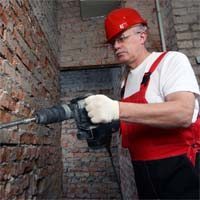BAP1 May Not Be The Only Gene to Increase Mesothelioma RIsk
 The question of why some asbestos-exposed people develop malignant mesothelioma and others do not has been a key focus of mesothelioma research for more than a decade.
The question of why some asbestos-exposed people develop malignant mesothelioma and others do not has been a key focus of mesothelioma research for more than a decade.
We now know that a mutation in the BAP1 gene can predispose certain people to several types of cancer, including mesothelioma. This is known as BAP1 cancer syndrome. Without the BAP1 tumor-suppressing protein to keep it at bay, malignant mesothelioma is more likely to occur.
But a new study suggests that BAP1 is not the only genetic mutation that can make people more susceptible to the toxic effects of asbestos.
Researchers with several top Italian universities have identified ten different genetic variants that may play a role in the development of pleural or peritoneal mesothelioma.
Mesothelioma and Other Cancer “Syndromes”
The research team theorized that other genes involved in hereditary cancer syndromes similar to BAP1 might also be linked to a predisposition to mesothelioma.
To find out, they looked for so-called germline mutations – genetic mutations that could be passed from one generation to the next – in 93 patients with malignant pleural mesothelioma. They focused on 94 genes known to predispose people to cancer and found ten variants that appeared to increase mesothelioma risk.
“All these genes are involved in DNA repair pathways, mostly in homologous recombination repair,” writes lead author Marta Betti with the Department of Health Sciences at the University Piemonte Orientale in Novara. “Patients carrying [these variants] represented 9.7% of the panel and showed lower asbestos exposure than did all the other patients.”
The results suggest that, in nearly one in ten mesothelioma patients studied, their bodies were not capable of efficiently repairing the DNA damage caused by their exposure to asbestos. This inability eventually led some cells to become malignant and produce mesothelioma tumors.
Implications of the New Study
Although this study sheds light on the potential origin of some mesothelioma cases, there is still no known way to prevent mesothelioma in asbestos-exposed people.
At best, understanding the mechanism behind a particular person’s mesothelioma case could help doctors select most effective mesothelioma treatment. It could also serve as a warning for higher-risk people to be especially wary of any situation that could expose them to asbestos.
Unfortunately, this does not mean that other asbestos-exposed people don’t need to worry. Most people who receive a mesothelioma diagnosis do not have any known predisposition to the disease. The US Environmental Protection Agency has said that no amount of asbestos exposure is safe and some cases of mesothelioma have occurred after only a brief exposure.
For this reason, US employers are now required to minimize the risk for mesothelioma by training workers to handle asbestos properly and providing them with specific kinds of protective gear. People with asbestos in their homes should never handle or disturb it and should hire professional help if it needs to be removed.
Source:
Betti, M, “Germline mutations in DNA repair genes predispose asbestos-exposed patients to malignant pleural mesothelioma”, July 4, 2017, Cancer Letters, Epub ahead of print





